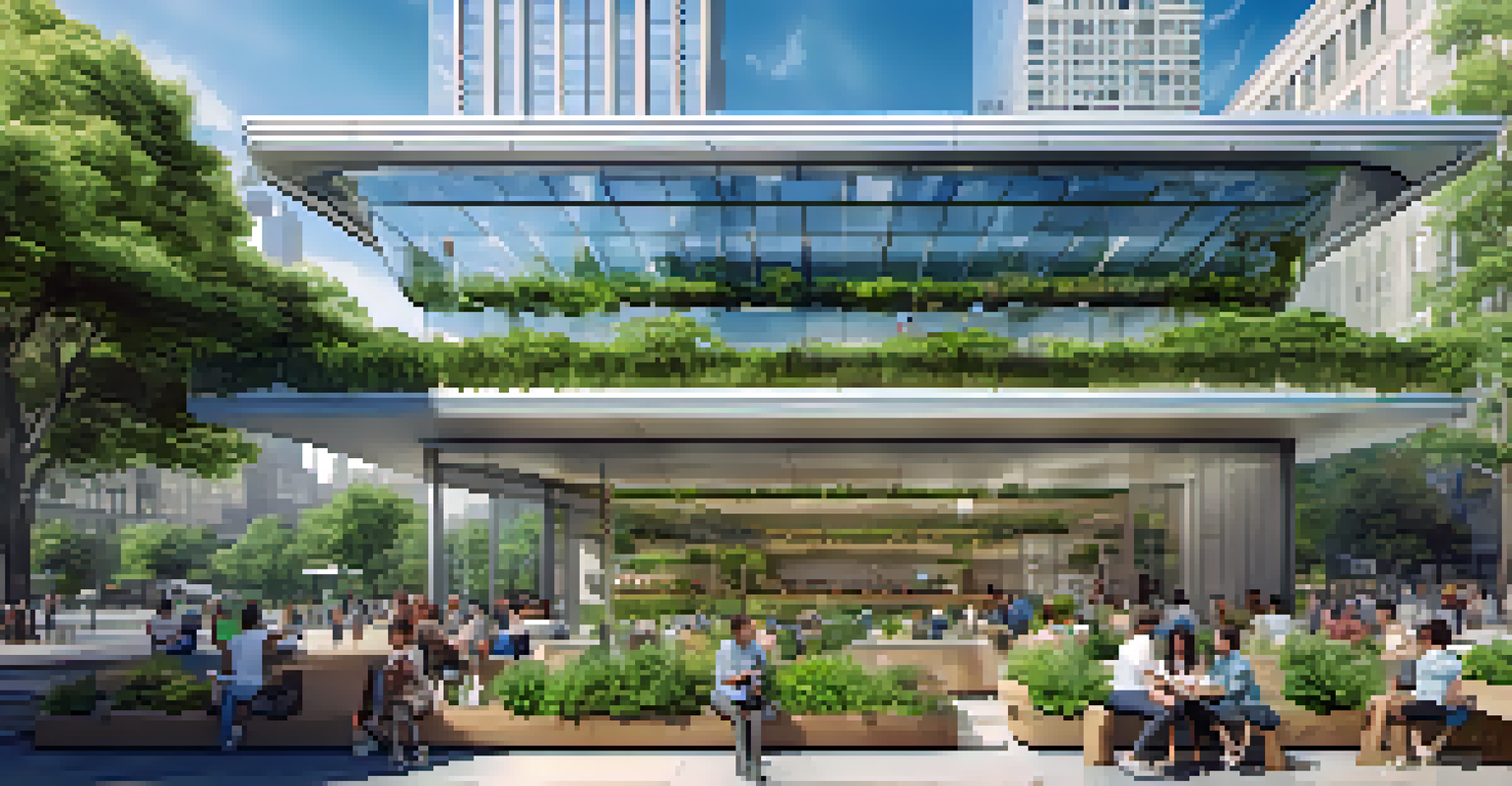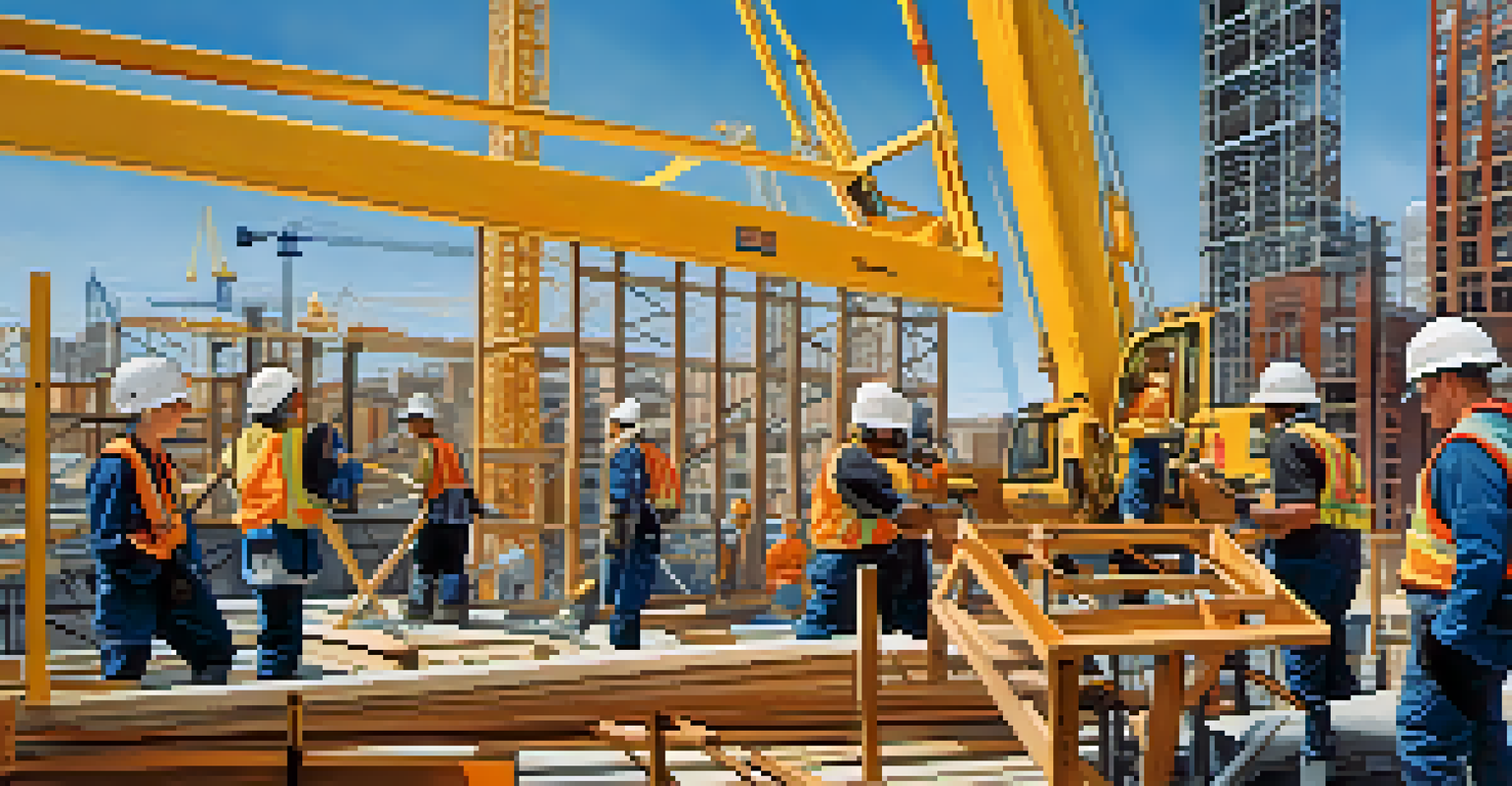Environmental Regulations Affecting NYC Real Estate

Understanding NYC's Environmental Regulations Landscape
New York City is home to a complex web of environmental regulations that aim to protect its unique ecosystems and promote sustainable development. From air quality standards to waste management, these rules impact how real estate developers operate within the city. It's essential for stakeholders to grasp this regulatory environment to navigate the challenges and opportunities it presents.
Sustainability is not a choice anymore; it is a necessity that we must embrace in every aspect of our lives, including real estate development.
The City Environmental Quality Review (CEQR) is a crucial process that examines the potential environmental impact of proposed developments. Developers must go through this process to ensure their projects align with local sustainability goals. Understanding CEQR helps in anticipating what changes might be needed to meet regulatory standards.
Additionally, the Local Law 97 mandates significant reductions in greenhouse gas emissions for large buildings. This regulation not only encourages energy efficiency but also influences property values and investment decisions. As the city pushes for greener practices, developers must adapt to these evolving demands.
Key Regulations Influencing Development Projects
Several specific regulations directly affect real estate projects in NYC, such as the New York City Zoning Resolution and Landmark Preservation laws. These regulations dictate what can be built and where, ensuring that new developments harmonize with the existing urban landscape. Understanding these guidelines is vital for developers to avoid costly delays and rejections.

For example, the Waterfront Revitalization Program aims to enhance waterfront access while preserving natural habitats. Projects along the waterfront must comply with this program, which can add layers of complexity to development plans. Developers who embrace these guidelines can create projects that stand out in the competitive real estate market.
NYC's Environmental Regulations Impact
Understanding NYC's complex environmental regulations is essential for real estate developers to navigate opportunities and challenges in the market.
Moreover, the air quality regulations set by the NYC Department of Environmental Protection require compliance to minimize pollution from construction activities. These standards not only safeguard public health but also impact the design and operational aspects of new buildings. Adhering to these regulations can improve community relations and enhance the marketability of properties.
The Role of Sustainability in NYC Real Estate
Sustainability has become a buzzword in New York City's real estate sector, driven by both regulatory requirements and market demand. Developers are increasingly focused on creating eco-friendly buildings that use energy-efficient technologies and sustainable materials. This shift not only aligns with regulations but also attracts environmentally conscious buyers and tenants.
The greatest threat to our planet is the belief that someone else will save it.
Green building certifications, such as LEED (Leadership in Energy and Environmental Design), are becoming essential for new projects. These certifications demonstrate a commitment to sustainability and can lead to higher occupancy rates and rental prices. Understanding the benefits of green certifications can significantly shape a developer's strategy.
Furthermore, the integration of green spaces in urban development is encouraged by various regulations. Parks, community gardens, and green roofs not only improve the quality of life but also contribute to biodiversity. Creating these spaces can enhance a property's appeal and comply with environmental goals.
Impact of Climate Change on Real Estate Regulations
As climate change continues to threaten urban areas, NYC is adapting its regulations to address these challenges. Rising sea levels and increased flooding risk have prompted stricter building codes and zoning laws, particularly in vulnerable areas. Developers must stay informed about these changes to ensure their projects are resilient to climate impacts.
For instance, the city's flood zone regulations require new developments to incorporate flood-resistant designs. This may involve elevating structures or using materials that withstand water exposure. Understanding these requirements helps developers mitigate risks and protect their investments.
Sustainability Drives Real Estate Trends
Developers are increasingly focusing on sustainability, which not only meets regulatory requirements but also attracts eco-conscious buyers and tenants.
Additionally, NYC's Climate Mobilization Act aims to reduce greenhouse gas emissions from buildings, encouraging retrofitting existing structures. This law is reshaping the real estate landscape, as owners must invest in upgrades to meet new standards. Being proactive about compliance can enhance property value and appeal.
Financing Challenges Due to Environmental Regulations
Navigating the financial landscape of real estate development in NYC can be daunting, especially with the added complexities of environmental regulations. Access to financing may depend on a developer's ability to demonstrate compliance with various sustainability standards. Lenders are increasingly prioritizing projects that align with environmentally friendly practices.
Moreover, securing government grants and incentives can be challenging without a solid understanding of environmental regulations. Developers who can showcase their commitment to sustainability are better positioned to obtain financial support. This can include tax incentives for green building practices or funds for energy-efficient upgrades.
As more investors seek out sustainable projects, understanding these financial dynamics can significantly influence development strategies. Developers who are equipped to meet regulatory requirements are more likely to attract potential investors and secure favorable financing terms.
Community Engagement and Regulatory Compliance
Community engagement is becoming an essential aspect of real estate development in NYC, particularly in relation to environmental regulations. Developers are encouraged to involve local residents in the planning process to address concerns and gain support for their projects. This approach not only fosters goodwill but also ensures compliance with community-specific regulations.
Public hearings and community meetings are often required as part of the CEQR process. Engaging with the community can provide valuable feedback that shapes the final design and implementation of a project. Developers who actively listen to community input can create spaces that truly reflect the needs and desires of local residents.
Community Engagement Enhances Projects
Involving local residents in the development process fosters goodwill and compliance, ultimately leading to more successful real estate projects.
Furthermore, building positive relationships with neighborhood groups can facilitate smoother regulatory approvals. When communities feel heard, they are more likely to support new developments, leading to a more collaborative approach to urban planning. This can ultimately enhance the overall success and acceptance of real estate projects.
Future Trends in NYC Real Estate Regulations
As environmental concerns continue to evolve, so too will the regulations governing NYC's real estate market. The city is likely to implement more stringent standards as it seeks to combat climate change and promote sustainability. Staying ahead of these trends can give developers a competitive edge in the market.
Emerging technologies, such as smart building systems and renewable energy solutions, are expected to be integrated into future regulations. These advancements will not only enhance energy efficiency but also align with the city's goals for reducing emissions. Developers who embrace these innovations will likely see improved operational performance and tenant satisfaction.

Additionally, the growing emphasis on social equity in environmental regulations will shape how projects are conceived and executed. Ensuring that developments benefit all community members is becoming a priority. By understanding and adapting to these trends, developers can position themselves for success in an increasingly regulated environment.